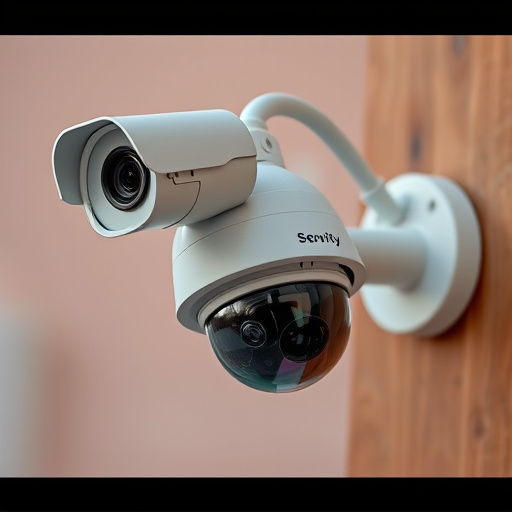Selecting high-quality dummy security cameras that closely resemble real equipment is crucial for a comprehensive surveillance strategy. Strategically placing these fake cameras, especially in visible areas like windows and entry points, creates the perception of a robust security system. The most convincing dummy camera type includes advanced design elements like detailed lenses, LED lights, and realistic mounting, effectively deterring potential threats by leveraging cognitive biases. Balancing deterrence with legality involves understanding local regulations and respecting privacy rights while maintaining a harmonious balance between crime prevention and individual freedoms.
In today’s world, security is paramount, but traditional surveillance systems can be costly. Fake security cameras offer an affordable solution, leveraging psychological deterrents to enhance safety. This article explores the art of strategic placement for maximum impact, delving into the psychology behind dummy cameras and highlighting the most convincing types available. We’ll guide you through legal considerations, provide maintenance tips, and share insights on choosing the optimal placement for a subtle yet effective security upgrade.
- Understanding the Psychology Behind Dummy Cameras
- Choosing the Most Convincing Dummy Camera Type
- Strategic Placement for Maximum Deterrent Effect
- Legal Considerations and Ethical Implications
- Maintaining Realism: Tips for Long-Lasting Deception
Understanding the Psychology Behind Dummy Cameras
Understanding the psychology behind dummy security cameras is key to choosing the most convincing type for your strategy. The human brain has a tendency to seek patterns and fill in gaps, making fake cameras an effective deterrent. When placed strategically, these dummy cameras can create the perception of a comprehensive surveillance system, even if they don’t capture any actual footage.
The most convincing dummy camera type often incorporates advanced design elements that mimic real security equipment. This includes detailed replicas of high-definition lenses, LED lights that mimic infrared or motion-activated features, and mounting options that match standard camera installations. By combining realistic aesthetics with strategic placement, these fake cameras can significantly enhance the overall perception of security in any environment.
Choosing the Most Convincing Dummy Camera Type
When selecting the best dummy security camera, the first consideration is choosing the most convincing type. Go for models that closely mimic real cameras with features like LED indicators, a realistic lens design, and housing materials that match authentic security equipment. Avoid overly obvious fakes that can raise suspicion; instead, opt for subtle designs that blend seamlessly into the environment.
Think about placement – indoor or outdoor – to guide your choice. For interior spaces, disk or bullet-style cameras are often convincing since they’re commonly used indoors and offer a realistic appearance. Outdoors, weatherproof dome cameras can be more plausible while still providing excellent coverage. The key is to select a model that feels authentic, deterring would-be thieves without alerting them to the fact it’s not real.
Strategic Placement for Maximum Deterrent Effect
Strategic placement of security cameras, including dummy or fake cameras, can significantly enhance physical security and act as a powerful deterrent for potential intruders. When selecting locations for these devices, consider areas with high visibility to ensure they appear in plain sight, acting as an immediate psychological barrier. Windows, entry points, and open spaces are prime spots; visible cameras signal that any unauthorized activity will be quickly detected.
The most convincing dummy camera type often mimics the appearance of real surveillance equipment, complete with LED indicators and moving parts. Positioning these strategically can create a sense of insecurity in would-be thieves, encouraging them to choose easier targets. Regularly changing their positioning also keeps both genuine and fake cameras dynamic, maintaining an air of constant vigilance.
Legal Considerations and Ethical Implications
When implementing a fake security camera placement strategy, it’s crucial to balance deterrence with legal and ethical considerations. Different dummy camera types are available, each offering varying levels of realism. The most convincing dummy camera is often one that closely mimics genuine security equipment in both appearance and functionality, making it difficult for potential criminals to distinguish between real and fake. However, this raises questions about privacy and surveillance ethics.
Legal frameworks vary across jurisdictions, but many countries have regulations regarding the placement of cameras, especially in public spaces and residential areas. Using realistic dummy cameras could potentially infringe on privacy rights if not properly disclosed or placed in unauthorized locations. It’s essential to understand local laws and inform residents or businesses about the use of fake security equipment to avoid misunderstandings or legal repercussions, ensuring a harmonious balance between enhanced security and individual freedoms.
Maintaining Realism: Tips for Long-Lasting Deception
To maintain realism and maximize the effectiveness of your fake security camera placement strategy, opt for high-quality dummy cameras that closely resemble their genuine counterparts. These should feature detailed designs, including lenses, lights, and mounting hardware, to create a convincing visual illusion.
Placement is key. Position the dummy cameras in areas where real security cameras would logically be installed, such as corners, doorways, or near windows. Consider factors like lighting, line of sight, and camera angle for maximum deception. Regularly rotate or reposition these fake cameras to prevent patterns from emerging, keeping both potential intruders and genuine security personnel on their toes.
In conclusion, strategic placement of fake security cameras, while considering psychological factors and legal implications, can significantly deter criminal activity. Choosing the most convincing dummy camera type and maintaining realism are key to achieving effective deterrent effects. By understanding these elements, property owners can enhance their safety measures in a cost-effective manner.
